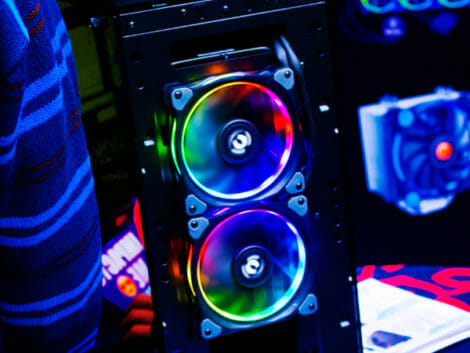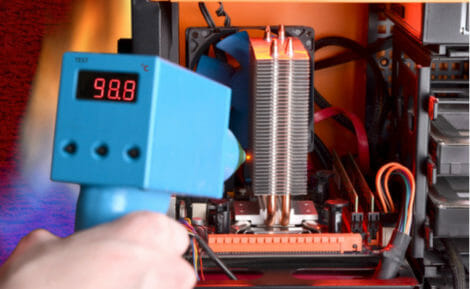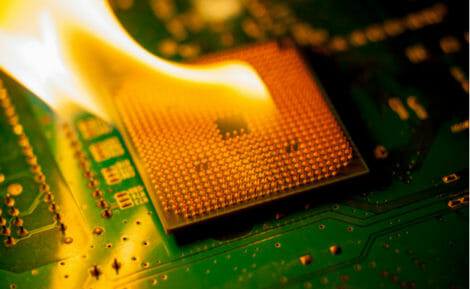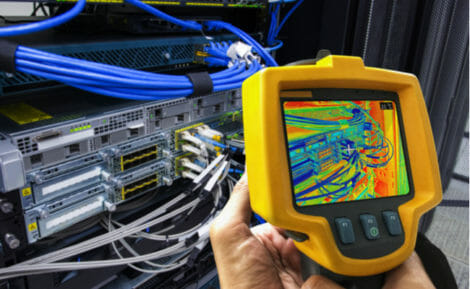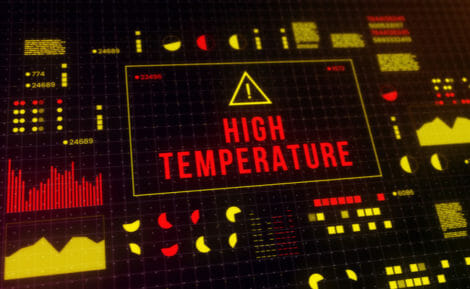How to Check Your PC Temperature
When performing intense tasks, your computer should remain cool under pressure. It shouldn’t lag or slow down, and it must maintain a low temperature at all times. Otherwise, you could face long-term issues with your PC.
You can’t just touch your computer to see if it’s hot because it might be too late by then. How can you get an accurate temperature reading if that’s the case? Fortunately, we will go through how you can measure this factor of your PC performance.
Let’s emphasize the importance of keeping an eye on your CPU temperature. You will also see how you can monitor the temperature of PC components. If your computer is feeling the heat, we will go through how you can cool it down.
Why do you need to check PC temperature?
Check on the internet, and you’ll see that computers consume a lot of electricity in your home. Energy often manifests as heat, so your PC builds up a lot of it.
This is especially true as you make your computer do more things. Let’s say you attend online classes. Your laptop may easily stay cool while you’re just reading your lessons.
Once you get homework, you might have to open multiple Google Chrome tabs for research. As you get bored, you might sneak a peek on TikTok for a break.
Your computer’s central processing unit (CPU) will have to handle all those tasks. As it does so, it generates and accumulates heat. If you’re not careful, it may cause performance issues.
Your PC may start to slow down. It might take more time than before to open websites or programs. The computer might not boot as quickly too.
In the worst-case scenario, your CPU might permanently shut down. Computers can only take heat up to a certain threshold. Go beyond that, and you may completely brick your system.
This is especially true if you’re building a gaming PC. Most people focus on graphics cards, so they become frustrated when cryptocurrency miners buy a lot and jack up the prices.
You typically won’t hear them talk a lot about the cooling systems. However, the high-end components often generate more heat than regular pre-built computers.
PC builders may also choose to overclock their CPUs.
It’s when you make the central processing unit perform at a higher performance level than its designed threshold.
Aside from monitoring your CPU temperature, you’d have to consider the temperature for the other components. Fail to keep them cool, and you can say goodbye to various components.
How to Check Core Computer Temperature Without Apps
You can check your computer’s temperature with or without installing extra software. Let’s start with the steps to doing it with the BIOS/UEFI interface:
Here are the instructions for Windows 10:
- Open the Windows Taskbar at the lower left side of the screen.
- Click the Settings button with a white gear icon found above the Taskbar icon and the computer’s shutdown options. That will open a new search bar and index under the Windows Settings header.
- Scroll down to the Update & Recovery tab under the Window Settings index.
- Pick the Recovery tab found in the left sidebar. That new sidebar should load along with the Update & Recovery panel.
- Scroll down to the Advanced startup heading and click the Restart now button.
- Click the Troubleshoot button.
- Click the Advanced options button. This will let you see the startup, settings, system restore settings, and other recovery options.
- Choose Restart. This should load your BIOS/UEFI interface to show the CPU temperature readout.
Here are the instructions for Windows 11:
- Click on the Start button and press the Power button.
- Press and hold the Shift key while clicking Restart.
- Your computer will restart and show the Advanced startup screen. Once it does, click on Troubleshoot.
- Click on the UEFI Firmware Settings.
- Select the Restart button.
- This will take you to an interface that shows multiple metrics. At the bottom, you’ll see a line graph with your core PC temperature under it.
Both options let you look at computer temperature without installing third-party monitoring software. This means you won’t have to pay extra for a copy or share personal information for registration.
The downside is that you will take a long time to see this single metric. This won’t do if you’re trying to fix an issue with your computer. You’ll take too long just to look at its potential causes.
How to Check the Temperature of PC Parts
If you prefer not to go through the hassle, you can install third-party software. You can find so many free and reliable options out there, such as Core Temp.
Here’s how to check your PC temperature using Core Temp:
- Download Core Temp on “https://www.alcpu.com/CoreTemp/.” Alternatively, you may click the link above.
- Open the app by double-clicking on the shortcut or pressing enter when it appears on the Search menu.
- This should open the Core Temp window. Look below to find the list of processors and their corresponding temperatures.
- If you want to access this tool quickly, click the bottom of your taskbar. Then, select “show hidden icons” so you can quickly see if your computer is running at a higher temperature.
Nowadays, laptop brands offer branded diagnostic tools for their products. For example, you might want to download MSI Afterburner if you have a laptop or processor of the same brand.
Unlike the BIOS/UEFI interface, you don’t need a long just to check your CPU temperature. The more advanced options even let you check the temperature of each computer part.
This is especially handy if you’re trying to maintain your high-end gaming rig. However, this convenience may come at the expense of your safety or extra money.
Core Temp is one of the most common CPU temp monitoring tools out there, but you can find so many other fake ones. Those could place malware and viruses into your system.
If not, the computer temperature software may require additional registration. You may have to provide sensitive information, and you may have to log in just to monitor CPU temperature.
What’s more, the branded monitoring tools may charge extra money. It might not be worth the purchase if you just want to check this single metric.
What’s the right PC temperature?
You can check the optimal temperature for your computer by visiting CPU World. Enter your CPU’s model number, and it will show this info.
Here are the common PC temperatures and what they mean:
- Below 60 degrees Celcius is the optimal level for most computers.
- If it’s between 60 and 70 degrees Celsius, this could mean your PC is accumulating dust. Open it and use a compressed air can to spray off the dust.
- The CPU cooler fans might be getting dusty from 70 degrees Celsius to 80 degrees Celsius. It’s best to use a can of compressed air to clean it thoroughly. If you’re overclocking, a temperature of more or less 75 degrees Celsius is typically normal.
- Your computer might be at risk if it’s running up to 80 degrees to 90 degrees Celsius. Peek inside your computer to make sure there isn’t too much dust in there. However, it’s common for gaming computer temperature to reach this range when running games with high specs. Just be careful if it’s hitting 85 degrees Celsius.
- Your PC temperature must not reach 90 degrees Celsius. Turn off the computer immediately and unplug it once it has shut down properly. Avoid switching it on again until you’ve cleaned its insides. If you’re using a gaming PC, see problems with the components.
How to Keep Your Computer Cool
You may have noticed that removing dust is a great way to maintain your PC temperature. That’s because it could keep heat inside your device, and it may keep the fans from rotating properly.
It’s best to use a can of compressed air to blow away the dust. Do not wipe them with a cloth, especially the more critical parts like the motherboard.
Most of these are delicate, so one wrong swipe could scratch it. This could mean replacing a functioning component because of one mistake.
Here are the other ways you can maintain your computer temperature:
- Replace your CPU thermal paste. It’s the fluid that you apply before installing the CPU. The paste keeps pockets of air from forming between its pins to keep cool. Eventually, you may have to apply it again as it hardens after some time.
- Sometimes, you just have to replace your CPU Cooler fan. You may get another one or put a liquid cooling system instead.
- Use a laptop stand that could elevate your portable computer. That way, air could freely circulate, keeping it cool.
- Keep viruses and malware away from your computer. Those could run unnecessary processes that could increase your PC temperature.
Related Articles
Final Thoughts
Too much heat can be harmful to your computer. That’s why you should keep an eye on its temperature. If it goes too high, you might have to clean your device.
The same goes for your other electronic devices. Those could also break if they get hot enough. Turn off devices you’re not using and unplug them if possible.
For more computer tips, check out more articles from Inquirer USA. You may want to chill with its refreshing updates about the latest trends and news.
